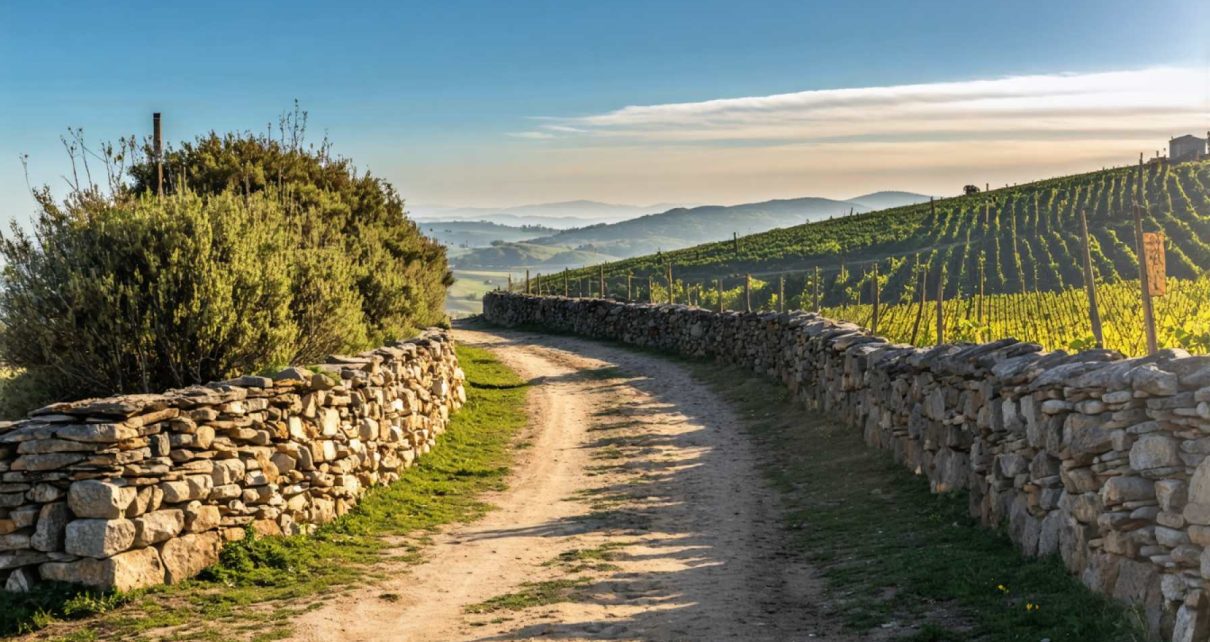- Frómista, once part of “la España vaciada,” now thrives as a key waypoint on the Camino de Santiago, welcoming over 200 pilgrims daily from April to November.
- A 75% increase in pilgrims since 2010 has revitalized the village, enhancing its cultural and economic landscape.
- Known as the ‘capital of the Romanesque in Palencia,’ Frómista is home to historic gems like the church of San Martín.
- The Canal de Castilla, a remnant of 18th-century engineering, offers scenic walks and historical intrigue.
- The village offers unique experiences, including a Michelin-recognized restaurant and Eco Hotel Doña Mayor, run by the Totorica sisters.
- Frómista’s growth highlights the power of sustainable tourism, merging tradition with modern hospitality to create memorable pilgrim experiences.
Frómista, a quaint village nestled in the heart of the Palencia province, has emerged as a vibrant waypoint on the Camino de Santiago—a revered pilgrimage that snakes across Spain. This picturesque locale, once considered part of “la España vaciada,” now basks in a newfound bustle, welcoming more than 200 pilgrims daily during peak season from April to November.
The surge in pilgrims, as demonstrated by a 75% increase since 2010, has brought Frómista to life, infusing it with cultural richness and economic vitality. While locals in Santiago de Compostela voiced their preference for a quieter tourism model, Frómista’s residents have embraced this pilgrim tide with open arms, invigorating the village and providing a well-needed boost to the local economy.
Frómista isn’t just a stopover; it’s a journey into history. Known as the ‘capital of the Romanesque in Palencia,’ the village proudly showcases architectural marvels such as the ancient church of San Martín. However, its historical significance doesn’t end there. The village was once a key communication hub for grain transportation across the provinces of Castilla y León, spurring the construction of the Canal de Castilla. This canal, a tour de force of 18th-century engineering, now seduces visitors with its tranquil walkways and storied past.
For pilgrims traversing the 16th stage of the Camino Francés, which stretches from Frómista to Carrión de los Condes, the journey offers a picturesque odyssey of flat terrains and stunning vistas. International tourists, particularly from the Americas and Asia, cherish this route not just for its serene beauty but for the unique experiences awaiting them—like indulging in a Michelin-recognized restaurant that requires reservations well in advance during May, a month marked by a spike in pilgrim footfall.
The Eco Hotel Doña Mayor, run by the entrepreneurial sisters Elena and Lorea Totorica, stands as a beacon of hospitality. Since its establishment in 2012, this charming hotel has played a pivotal role in transforming Frómista into a beloved stopover on the Camino de Santiago. The Totoricas have ingeniously intertwined the village’s cultural tapestry into a portfolio of activities, including stargazing sessions and guided bike tours along the ancient canal. Furthermore, an interactive QR code-based map narrates the village’s vibrant stories, enhancing the pilgrims’ overall experience.
As the world gradually emerged from the pandemic, Frómista saw a dramatic increase in pilgrims, especially from English-speaking countries and Japan. Their presence has become a cherished element of Frómista’s atmosphere—pilgrims frequently engage with one another in hotel’s cozy salon, fostering international camaraderie.
The key takeaway from Frómista’s transformation is the profound impact of embracing cultural heritage and hospitality. Frómista’s revival is an inspiring testament to the potential of sustainable tourism, where tradition and modernity blend seamlessly to forge unforgettable experiences for travelers from across the globe. As pilgrims continue to chart their courses towards Santiago, Frómista stands ready to welcome them, offering a memorable sojourn steeped in history and hospitality.
The Hidden Gem of Camino de Santiago: Frómista’s Revival
Discovering Frómista: A Renaissance on the Camino
Frómista, once a sleepy village in the Palencia province, has experienced a dynamic transformation through its role as a pivotal stop on the Camino de Santiago. Welcoming over 200 pilgrims daily during peak season, the village has come alive with cultural energy and economic opportunity. Here, we delve deeper into what makes Frómista an essential stop for modern pilgrims and tourists alike.
Real-World Insights and Historical Significance
1. Romanesque Architecture: Known as the ‘capital of the Romanesque in Palencia,’ Frómista is home to the renowned Church of San Martín. This architectural marvel dates back to the 11th century and offers visitors a glimpse into the rich ecclesiastical heritage of the region.
2. Economic Impact: The influx of pilgrims, having increased by over 75% since 2010, has stimulated local businesses and created new opportunities. Local accommodations, eateries, and shops thrive on the business brought by these travelers.
3. Canal de Castilla: The 18th-century Canal de Castilla, historically used for grain transportation, has now been repurposed for tourism. It offers picturesque walking paths and a deep dive into the area’s past, showcasing engineering prowess from a time gone by.
How-To Experience Frómista
– Reserve Early: A key tip for travelers is to plan your accommodation and dining experiences ahead of time. A Michelin-noted restaurant in the area often requires reservations, especially during peak seasons such as May.
– Interactive Experiences: Utilize the innovative QR code-based map available in Frómista. This tool allows visitors to access stories and insights about the village, enhancing the pilgrim’s journey.
– Stargazing and Bike Tours: Engage in unique activities like stargazing and guided bike tours along the canal, curated by Eco Hotel Doña Mayor, which serve to deepen the appreciation of Frómista’s natural and cultural landscape.
Industry Trends and Future Prospects
With the global trend towards experiential and sustainable tourism, destinations like Frómista are poised for further growth. The village’s blend of historical allure and modern hospitality aligns perfectly with these evolving preferences.
Controversies and Limitations
While the surge in tourism has driven economic growth, it also raises concerns about over-tourism and the preservation of cultural heritage. Balancing increased visitation with sustainable practices remains a challenge for local stakeholders.
Pros & Cons Overview
– Pros: Rich historical significance, thriving local economy, unique cultural experiences.
– Cons: Potential for overcrowding, strain on local resources during peak season.
Quick Tips for Pilgrims and Tourists
– Time Your Visit: Aim to travel during shoulder seasons (early spring or late autumn) to enjoy fewer crowds and milder weather.
– Engage Locally: Participate in local events or volunteer opportunities to enrich your experience and contribute to the community.
– Respect the Pilgrimage: Understand the significance of the Camino de Santiago and respect the routes and traditions upheld by the pilgrims.
For more insights into travel and tourism, visit [Camino Ways](https://www.caminoways.com) and [Spain’s Official Tourism Website](https://www.spain.info).
In conclusion, Frómista is not just a waypoint on the Camino de Santiago but a vibrant destination in its own right. Through thoughtful engagement with its history and community, travelers can find both inspiration and connection in this enchanting village. Whether you’re seeking spiritual fulfillment or cultural enrichment, Frómista offers a diverse and rewarding experience on every level.



